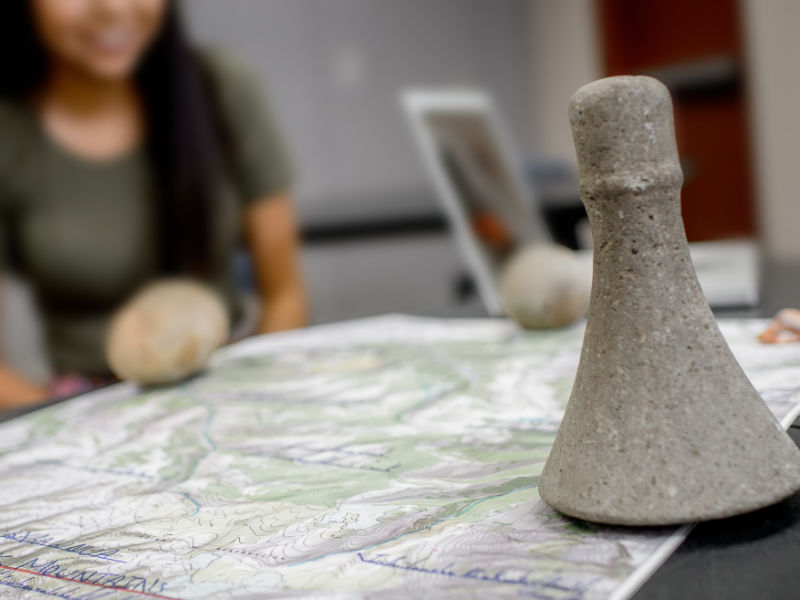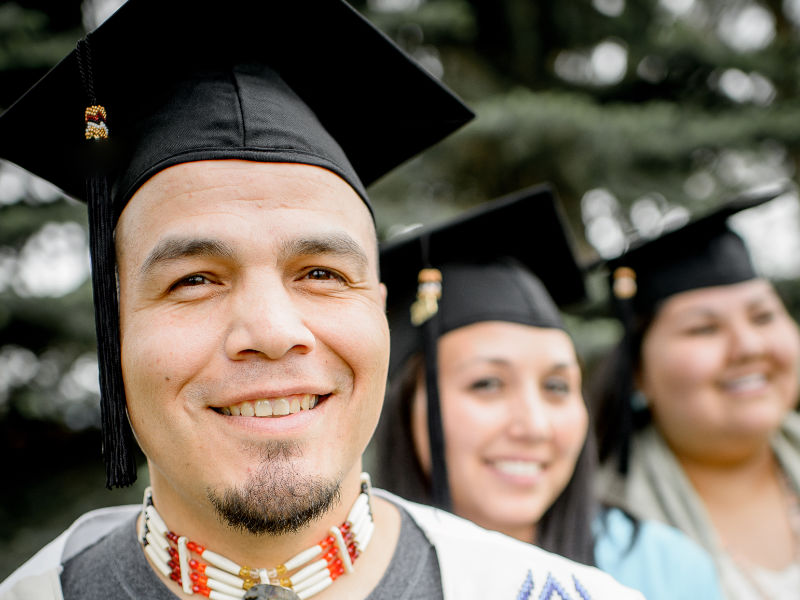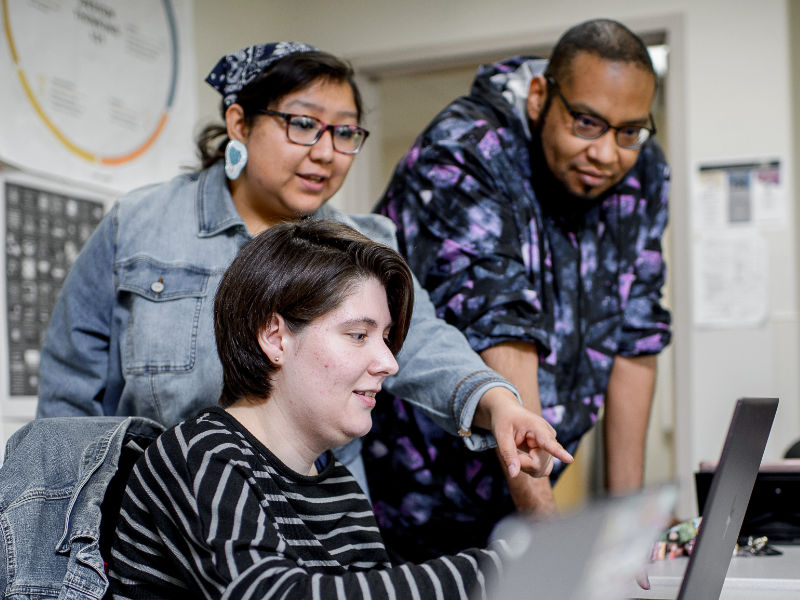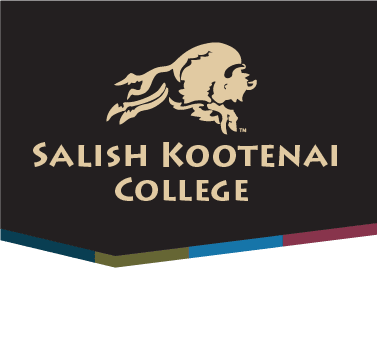Developed for Native Americans
Salish Kootenai College was created by Natives for Natives. We understand the unique challenges of growing up going to college as Natives like no “big school” can.
Culturally Connected Community
We embedded Native culture in many of our courses, from beading and language to math and science. Learning here takes place within a historical and cultural tribal context.
Masters, Bachelor, and Associate Degrees & Certificates
Degrees and certificates, an education that prepares you for your next step. Many graduates can go on to fill essential roles in the tribal communities. Some SKC graduates continue their education with advanced degrees.
Naturally Indigenous
SKC was created to serve the unmet needs of the peoples of the Confederated Seliš, Ksanka, and Q̓ispe̓́ people, by members of our tribe. Native Americans are traditionally underrepresented in higher education. Thi is due to bias and a lack of awareness of historical and cultural hurdles. We understand the challenges faced by Native American students. And, we aim to deliver an experience that encourages indigenous learners.

Connected to our past and present
Being Native today is challenging as the world tries to pull us from our roots. SKC recognizes the need to walk in two worlds. We connect our individual course materials to traditional Native perceptions, activities, and principles. This link between our past, present, and future allows our graduates to remain grounded in tradition as they charge into their future.

See a need, fill a need
Salish Kootenai College developed many of its programs to serve the specific needs of tribes across the US and Canada. Access to higher education for Native Peoples creates more Natives with professional degrees. Then tribes can hire members and descendants for positions that would otherwise go to non-members. We aim to empower Indian Country with the tools to strengthen themselves from within.

Native american studies programs
Tribal governance & administration
The Tribal Governance and Administration program focuses on structures, processes and issues specific to Tribal Governments and Tribal Operations. Currently, there are no other Bachelor of Arts Degree Programs in any of the tribal colleges in the U.S. in the area of Tribal Governance and Tribal Administration. The Tribal Governance and Administration curriculum has been developed to meet the needs of emerging leaders who are interested in entering in the field of Tribal government and Tribal administration.
Tribal Historic Preservation
The Tribal Historic Preservation major is committed to training resourceful, skilled, multi-disciplinary preservationists and promoting the involvement of tribal people and governments in cultural resource management that respects and values indigenous ways of knowing, oral tradition and Native ideologies. The THP curriculum is grounded in a unique combination of Native American Studies, History, Anthropology, Natural Resources, Museum Studies and Native Language Studies.
Native teacher language education
The purpose of the Native Language Teacher Education (NLTE) Program and current Salish Language Educator Development (SLED) specialization is to prepare and graduate professionals who are working towards fluency in the Salish language and demonstrate the ability to teach that language to students from preschool through adulthood. This program is designed to meet the critical need for Native language teachers who are both working toward fluency in their language and are skilled in teaching.
Not just native studies
Our programs include traditional Native knowledge, science, practices, and art (specifically those of the Seliš, Ktnaxa, and Qlispe peoples) wherever possible.
Our Seasonal Rounds
The Seasonal Round is a representation of the Salish and Pend d'Oreilles movements and activities. The circle symbolizes a map and calendar that breaks down activities done in the different quadrants, embodying time and place.
The Division of Education uses “The Seasonal Round” to teach students in the program the different traditional science usage. The class is broken up into three separate courses that follow the seasonal calendar (ecological indicators) to teach students what the Salish and Pend d'Oreilles did during that season and how it all correlates with science. Each course can be taken as a standalone course but the idea is you start in the fall and finish in the spring. Salish Kootenai College started offering the three courses to show future educators the different ways of learning and teaching a subject.
Traditional ecological knowledge that the round demonstrates shows the many different bioindicators out in the environment. The sighting of the buttercup in the spring was one of many different indicators throughout the four seasons. The buttercup sighting stood for a few things. That winter was over and good weather was ahead. It also represented that it was time for the tribe to come together and engage in activities. One of the activities was getting their fishing gear ready because Cutthroat Trout spawning season was soon to take place.
The major food source in the spring for the Salish and Pend d'Oreilles people was bitterroot. The tool they used to dig up the bitterroot and other roots is called pátsa. At first glance, the tool looks primitive and simple but the science behind the creation makes it a complex design. In the early stages of the creation of the tools “observation” the first stages of scientific inquiry were used. The tribe observed nature in its activities like the bear. The bear was used as a representation of what roots to eat and not to eat. They observed the bear; how it stood, how it used its claws to dig up the roots, and other significant actions the bear participated in.
They started out using a stick on their knees but soon found their hands to be sore. Pátsa was designed like a lever with a slight curve to ergonomically get plants out of the ground. It was custom-designed to fit the individual with the purpose of not needing to be on the ground and to ideally be able to dig all day. Indigenous science and worldviews relied heavily on design, form, and function to achieve sustainability.
Winter was a time for storytelling and ceremonies. During this time the tribe would all come together in the winter grounds to pass on knowledge, partake in activities, reconnect with one another, pass on family traditions and lineage. Storytelling takes place in the winter months because during the other three seasons everyone should be busy making things and preparing to be sustainable during the winter months. The winter environment didn’t allow for many activities letting the tribe recharge, reflect, and prepare themselves for the upcoming seasonal rounds.
Fall, winter, spring, and summer all demonstrate different seasonal indicators that through scientific knowledge and technological developments helped form The Seasonal Round. Education majors learn in-depth about The Seasonal Round through the year-long structured courses that by the end they can pass on that knowledge to their students. The sciences that they focus on range from but not limited to earth science, biology, chemistry, physics, and natural sciences. Learning both indigenous science and western science viewpoints.
Apply now and enjoy a unique educational experience that blends Western academic knowledge with Native American perspectives and practices. Benefit from smaller class sizes, personalized attention, and opportunities for hands-on learning and research. Join a supportive community that values cultural diversity and academic excellence, and prepare for a successful career and leadership role in your community. Apply today and start your journey towards a brighter future at SKC!
